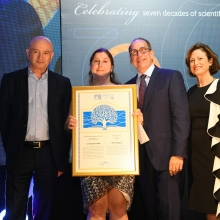Ground control to major discoveries
Weizmann’s new observatory in the Negev will help shape the future of astrophysics discovery
Features
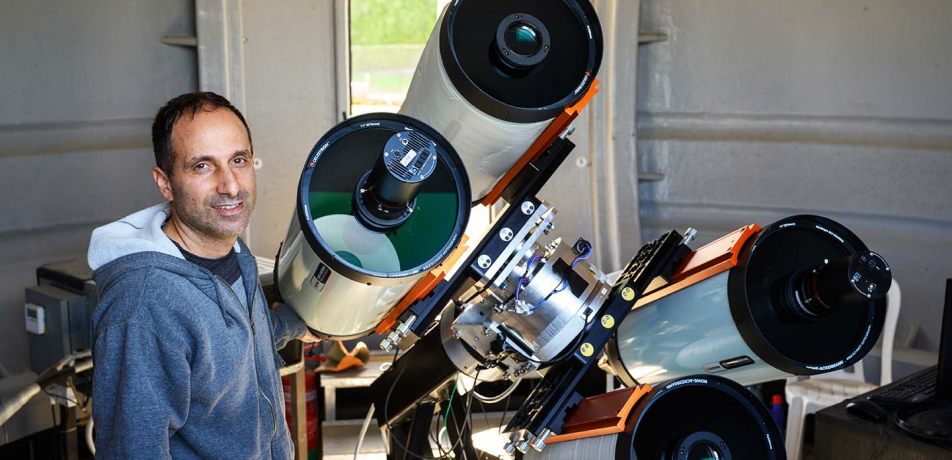
Gazing into the night sky is always an inspiration. For astrophysicists, the view is getting better and better.
At the Weizmann Institute of Science, experts in particle physics and astrophysics are behind Frontiers of the Universe, a flagship initiative that will launch a new generation of Israeli scientific space missions, and integrate the research continuum stretching from cosmology—the origin of the Universe’s development—to the behavior of fundamental particles in both inner and outer space. A critical component of the Frontiers project is the Weizmann Astrophysical Observatory (WAO), now under construction in Israel’s Negev Desert.
Located near the picturesque Kibbutz Neot Smadar, the WAO has a “wow factor”: it is an entirely new type of star observatory, based on novel, modular technologies pioneered by Weizmann astrophysicists. The WAO’s infrastructure, featuring dozens of telescopic components linked together, will make it possible to scan the visible Universe at extremely high temporal resolution, and to track quick-developing celestial events. Findings achieved using these platforms are expected to set the agenda for astrophysics researchers worldwide.
“This new facility will push the envelope of astrophysics discovery, thanks to a modular design that makes it possible to easily expand capabilities, and also move components to capture larger or more specific areas of the night sky,” says Prof. Avishay Gal-Yam, who, as Chair of the Institute’s Physics Core Facilities, is overseeing WAO development. “We believe that, once fully operational, WAO will mark a major step forward in ground-based observation.”
Seeing more, for less
Ground-based observatories are typically expensive, with the newest ones costing in excess of a billion dollars. But recent technological advances by Weizmann researchers have made it possible to achieve a significant increase in cost-effectiveness, while delivering digital capabilities that make it possible to observe space in a way that has never been possible before.
The new set-up will allow scientists to scan an extremely wide swath of the Universe very quickly, and to gather data with three-to-four times more efficiency than is currently possible using the world’s most powerful survey telescopes. “Our systems’ advanced capabilities are ideal for identifying signatures of hard-to-track celestial events, like the gravitational waves produced when neutron stars merge,” says Prof. Eran Ofek of the Department of Particle Physics and Astrophysics who, together with his departmental colleague Dr. Sagi Ben-Ami, leads the WAO effort. “The success of this project may mark a new era in observational astrophysics.”
The WAO will help advance the research of Dr. Ben-Ami, a Weizmann-trained scientist who recently joined the Institute faculty after completing postdoctoral research at Harvard University. Dr. Ben-Ami’s main research interest is the search for exoplanets that orbit white dwarfs—stars that are farther along in their evolution than our Sun, and which have the potential to have planets that support life. “Within three years of operation, our new observatory will increase the observed sample by a factor of 30, which will greatly boost the rate of exoplanet detection,” he says.
Mighty and modular
The Negev observatory consists of arrays of multiple off-the-shelf small telescopes coupled with commercially available and highly sensitive detectors. The system’s unique potential stems from its modularity—which will allow a steady increase in power as new nodes are added—as well as from original algorithms that allow Weizmann astrophysicists to store and analyze the immense data sets generated by their observations.
Weizmann scientists are currently advancing three WAO systems:
-
The Large Array Survey Telescope (LAST) is a 48-telescope array capable of sampling an unprecedented 355 squared degrees of the night sky, or observing a single, constrained point. Once constructed, it will be the most powerful survey telescope in the world, with the potential to increase in power as new modules are added.
-
The LAST-Spec is a tool that more than doubles the efficiency of conventional spectrographs. Capable of quickly characterizing the nature of radiation emanating from an astronomical source, LAST-Spec will be the first spectrograph in the world that is distributed—that is, based on multiple linked small telescopes, coupled together through a novel system of optical fibers developed at the Weizmann Institute.
-
The Weizmann Fast Astronomical Survey Telescope (W-FAST) is a ground-based system that captures 25 images per second, allowing the detection of previously unknown phenomena.
The W-FAST system is already in use; LAST and LAST-Spec will be completed and become operational in 2021 and 2022 respectively.
Seeking answers in the stars
When the Negev observatory is fully operational, studies by multiple Weizmann research groups are expected to help answer the some of most pressing questions in physics and astrophysics: What is the nature of gravity? How did the “stuff” of the Universe—from heavy elements like gold, to stars, solar systems, and galaxies—come into being? How might we identify massive asteroids that could crash into Earth and trigger global catastrophe? What does the Oort Cloud—a belt of comets beyond our solar system’s furthest planets—reveal about how our solar system was formed? What is the fate of planets orbiting evolved stars? Is there life elsewhere in the Universe, and if so, where?
The Weizmann Institute also plans to construct a Visitors’ Center at Neot Smadar that will host educational programs and public events.
Prof. Avishay Gal Yam is supported by the Benoziyo Endowment Fund for the Advancement of Science, the Helen Kimmel Center for Planetary Science, the André Deloro Institute for Advanced Research in Space and Optics, the Schwartz/Reisman Collaborative Science Program, the Norman E Alexander Family M Foundation ULTRASAT Data Center Fund, the Veronika A. Rabl Physics Discretionary Fund, and the European Research Council.
Prof. Eran Ofek is supported by the Willner Family Leadership Institute for the Weizmann Institute of Science, the Helen Kimmel Center for Planetary Science, the Schwartz/Reisman Collaborative Science Program, and the Richard F. Goodman Yale/Weizmann Exchange Program.
Prof. Sagi Ben-Ami is supported by the Willner Family Leadership Institute for the Weizmann Institute of Science, the Peter and Patricia Gruber Awards, the Azrieli Foundation, and the André Deloro Institute for Advanced Research in Space and Optics. He is the incumbent of the Aryeh and Ido Dissentshik Career Development Chair.
Frontiers of the Universe is supported by the Norman E Alexander Family M Foundation and Ety and David Alcalay.
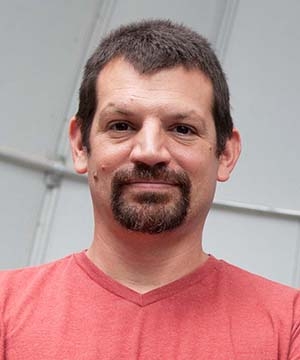
Prof. Avishay Gal-Yam
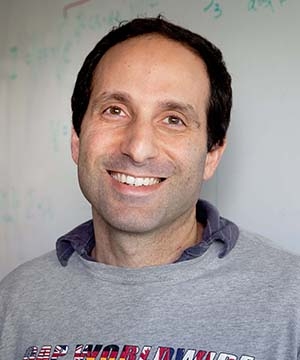
Prof. Eran Ofek
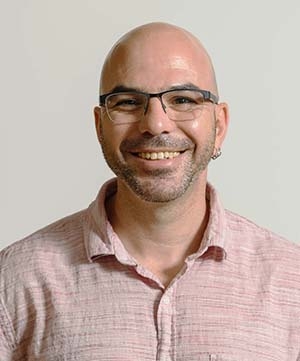
Dr. Sagi Ben-Ami




